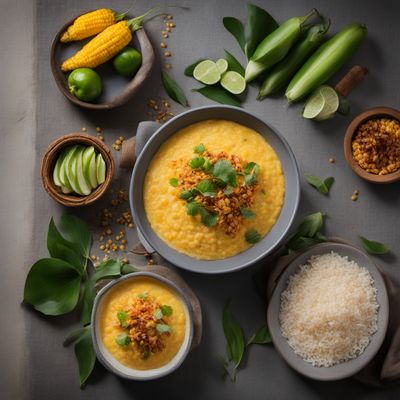
Ingredient
Cassava flour
Versatile Root Flour
Cassava flour is derived from the starchy root of the cassava plant. It has a fine texture and a neutral flavor, making it a versatile ingredient for both savory and sweet recipes. This flour is commonly used in gluten-free baking, as a thickening agent, or as a substitute for wheat flour in recipes.
Origins and history
Cassava, also known as yuca or manioc, is native to South America and has been a staple food in many tropical regions for centuries. It has played a significant role in the diets of indigenous communities and has cultural importance in various cuisines. Cassava flour is made by peeling, grating, and drying the cassava root before grinding it into a fine powder.
Nutritional information
Cassava flour is low in calories and fat, making it a suitable option for those following a low-fat or gluten-free diet. It is a good source of carbohydrates and dietary fiber, providing energy and promoting digestive health. However, it is important to note that cassava flour has a high glycemic index, so it should be consumed in moderation by individuals with diabetes or those watching their blood sugar levels.
Allergens
May contain allergens such as cassava.
How to select
When selecting cassava flour, opt for brands that are certified gluten-free to ensure it is free from cross-contamination with gluten-containing grains. Look for a fine, powdery texture and a bright white color, indicating that it is made from high-quality cassava roots. Additionally, check the packaging for any signs of moisture or clumping, as this may indicate poor storage conditions.
Storage recommendations
To maintain the freshness and quality of cassava flour, store it in an airtight container in a cool, dry place away from direct sunlight. Avoid exposure to moisture, as it can cause the flour to clump or spoil. Proper storage can help extend its shelf life for up to a year.
How to produce
Cassava plants can be grown in tropical or subtropical regions with well-drained soil and sufficient sunlight. The plants require regular watering and can take around 8-12 months to mature. Harvest the roots when they are fully grown, and follow the process of peeling, grating, drying, and grinding to produce cassava flour at home.
Preparation tips
Cassava flour can be used as a 1:1 substitute for wheat flour in most recipes, making it a versatile option for gluten-free baking. It can be used to make bread, pancakes, cookies, cakes, and more. When using cassava flour, it is important to note that it absorbs more liquid than wheat flour, so adjustments may be needed in the recipe. Additionally, cassava flour can be used as a thickening agent in soups, stews, and sauces.
Substitutions
Almond flour, coconut flour, or tapioca flour can be used as substitutes for cassava flour in certain recipes. However, keep in mind that each flour has its own unique characteristics, so adjustments may be needed in terms of texture and liquid ratios.
Culinary uses
Cassava flour is commonly used in gluten-free baking, such as making bread, pancakes, cookies, cakes, and pastries. It is also used as a thickening agent in soups, stews, and sauces. Additionally, cassava flour can be used to make traditional dishes like cassava flatbread or fritters in various cuisines around the world.
Availability
Commonly available in tropical regions, especially in South America, Africa, and Southeast Asia.
More ingredients from this category
Recipes using Cassava flour » Browse all

Godrogodro with Coconut Milk and Vegetables
Tropical Delight: Creamy Godrogodro with Fresh Vegetables

Brazilian Breakfast
Tropical Morning Delight

East Indian Spiced Cheese Bread
Savory Delight: East Indian Spiced Cheese Bread

Dim Sum with a Brazilian Twist
Brazilian-inspired Dim Sum Delights

Congolese-Inspired Arepa Santandereana
Savory Plantain Arepas with Spiced Chicken - A Taste of Congo

Jamaican Spiced Cassava Balls
Island Delights: Jamaican Spiced Cassava Balls

Bánh bột lọc with a Twist: A Fusion of Vietnamese and American Flavors
Vietnamese Dumplings with a Western Twist: A Fusion of Flavors

Bánh Bột Lọc - Steamed Tapioca Dumplings
Delicate Delights: Steamed Tapioca Dumplings from Vietnam

Marshallese-style Chicken Pudding
Savory Marshallese Chicken Delight

Budae Jjigae - Brazilian Style
Brazilian Army Stew - A Fusion of Flavors

Vietnamese Coconut Corn Pudding
Creamy Delights: Vietnamese Coconut Corn Pudding

Turks and Caicos Island Baked Cassava Bread
Caribbean Delight: Baked Cassava Bread with a Tropical Twist